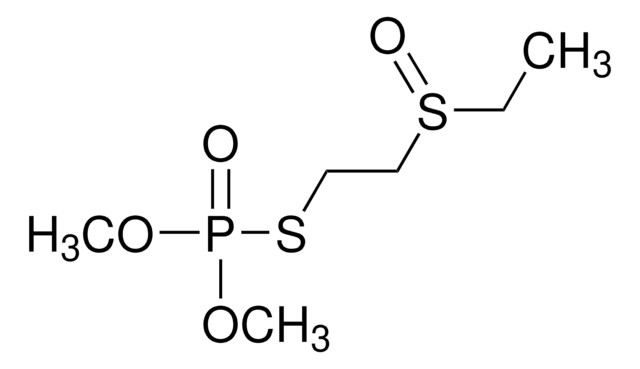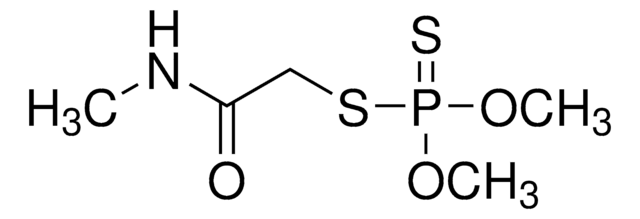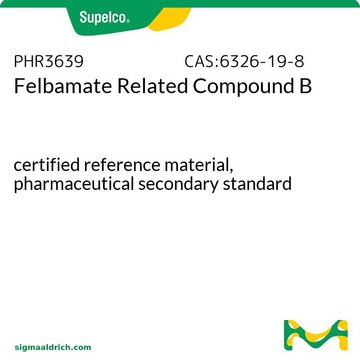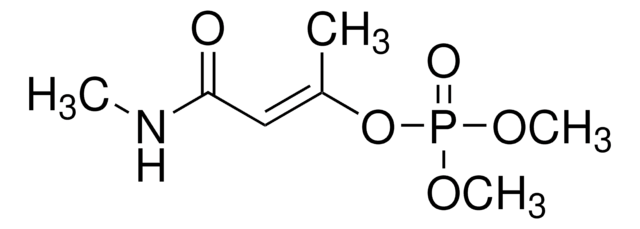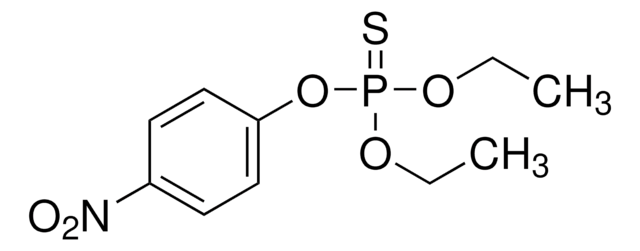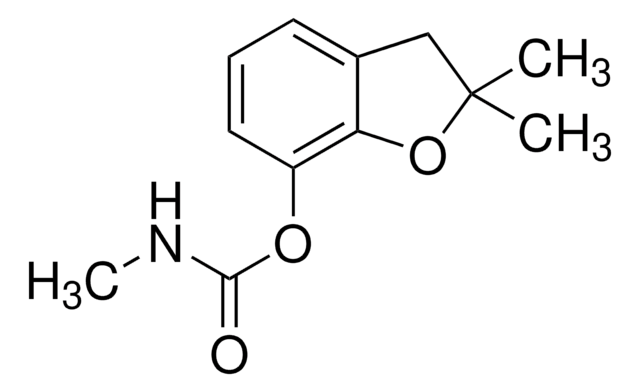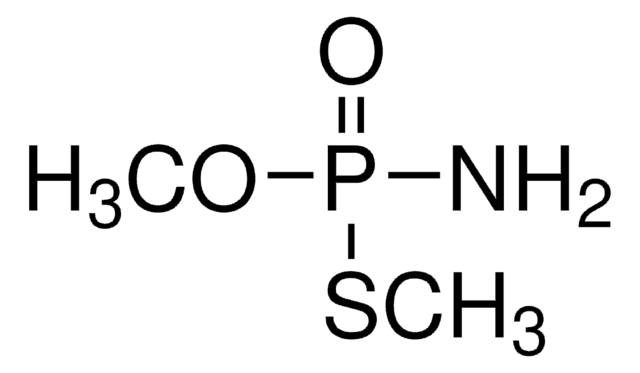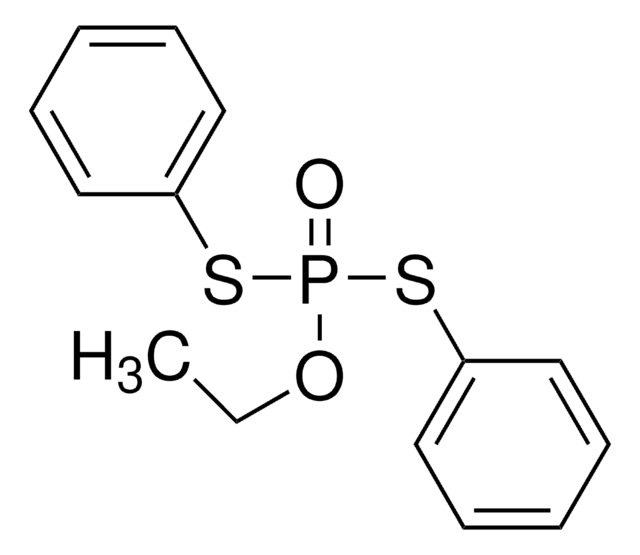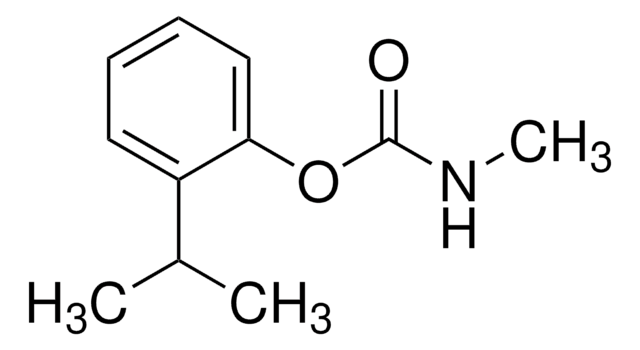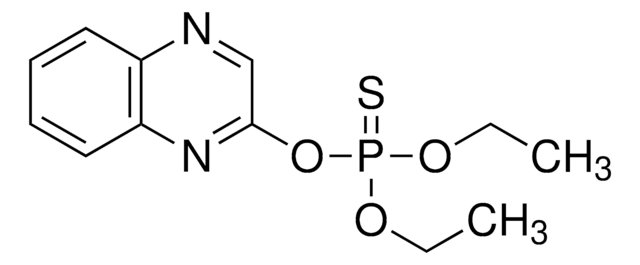CRM44794
Phosphamidon
certified reference material, TraceCERT®, Manufactured by: Sigma-Aldrich Production GmbH, Switzerland
Synonyme(s) :
2-Chloro-N,N-diethyl-3-(dimethylphosphono)crotonic amide
About This Item
Produits recommandés
Qualité
certified reference material
TraceCERT®
Niveau de qualité
Gamme de produits
TraceCERT®
Durée de conservation
limited shelf life, expiry date on the label
Fabricant/nom de marque
Manufactured by: Sigma-Aldrich Production GmbH, Switzerland
Format
neat
Température de stockage
−20°C
Chaîne SMILES
CCN(CC)C(=O)\C(Cl)=C(\C)OP(=O)(OC)OC
InChI
1S/C10H19ClNO5P/c1-6-12(7-2)10(13)9(11)8(3)17-18(14,15-4)16-5/h6-7H2,1-5H3/b9-8+
Clé InChI
RGCLLPNLLBQHPF-CMDGGOBGSA-N
Vous recherchez des produits similaires ? Visite Guide de comparaison des produits
Description générale
Certified content by quantitative NMR incl. uncertainty and expiry date are given on the certificate.
Download your certificate at: http://www.sigma-aldrich.com
Phosphamidon is a broad-spectrum systemic organophosphorus pesticide. It is used as an insecticide against sap-feeding insects, rice-stem borers, and rice leaf beetles in crops of sugarcane, citrus fruits, commercial cotton, and nuts.
As per Regulation (EC) No. 1107/2009, repealing directive 91/414/EEC, phosphamidon is not approved for use in the European Union. But a default maximum residue limit (MRL) of 0.01 mg/kg is applicable for the presence of phosphamidon in products of plant origin, in accordance with Regulation (EC) No. 149/2008.
Application
The phosphamidon CRM may also find following uses:
- Determination of five organophosphorus pesticides in a medicinal herb sample using QuEChERS along with dispersive liquid-liquid microextraction (DLLME) and stacking followed by micellar electrokinetic chromatography (MEKC)
- Magnetic solid phase microextraction (MSPE) of five organophosphorus pesticides using graphene based cyanopropyltriethoxysilane as an adsorbent from cow′s milk samples and their subsequent determination by gas chromatography with micro-electron capture detector
- Investigation of residue levels of highly toxic pesticides in 6554 samples of fruits and vegetables by quadrupole time-of-flight LC/MS
- Analysis of 4 organophosphorus pesticides by gas chromatography with microelectron capture detector following their extraction using a newly synthesized magnetic hybrid material as a solid phase extraction adsorbent
- Multi-residue analysis of 44 organophosphorus pesticides by QuEChERS method combined with gas chromatography in Pogostemon cablin samples
- Detection of organophosphorus pesticides in Chinese cabbage sample by a newly designed positive photoionization-ion mobility spectrometry (PP-IMS) apparatus
Informations légales
Vous ne trouvez pas le bon produit ?
Essayez notre Outil de sélection de produits.
Mention d'avertissement
Danger
Mentions de danger
Conseils de prudence
Classification des risques
Acute Tox. 2 Oral - Acute Tox. 3 Dermal - Aquatic Acute 1 - Aquatic Chronic 1 - Muta. 2
Code de la classe de stockage
6.1A - Combustible acute toxic Cat. 1 and 2 / very toxic hazardous materials
Classe de danger pour l'eau (WGK)
WGK 3
Point d'éclair (°F)
Not applicable
Point d'éclair (°C)
Not applicable
Faites votre choix parmi les versions les plus récentes :
Certificats d'analyse (COA)
Vous ne trouvez pas la bonne version ?
Si vous avez besoin d'une version particulière, vous pouvez rechercher un certificat spécifique par le numéro de lot.
Déjà en possession de ce produit ?
Retrouvez la documentation relative aux produits que vous avez récemment achetés dans la Bibliothèque de documents.
Notre équipe de scientifiques dispose d'une expérience dans tous les secteurs de la recherche, notamment en sciences de la vie, science des matériaux, synthèse chimique, chromatographie, analyse et dans de nombreux autres domaines..
Contacter notre Service technique